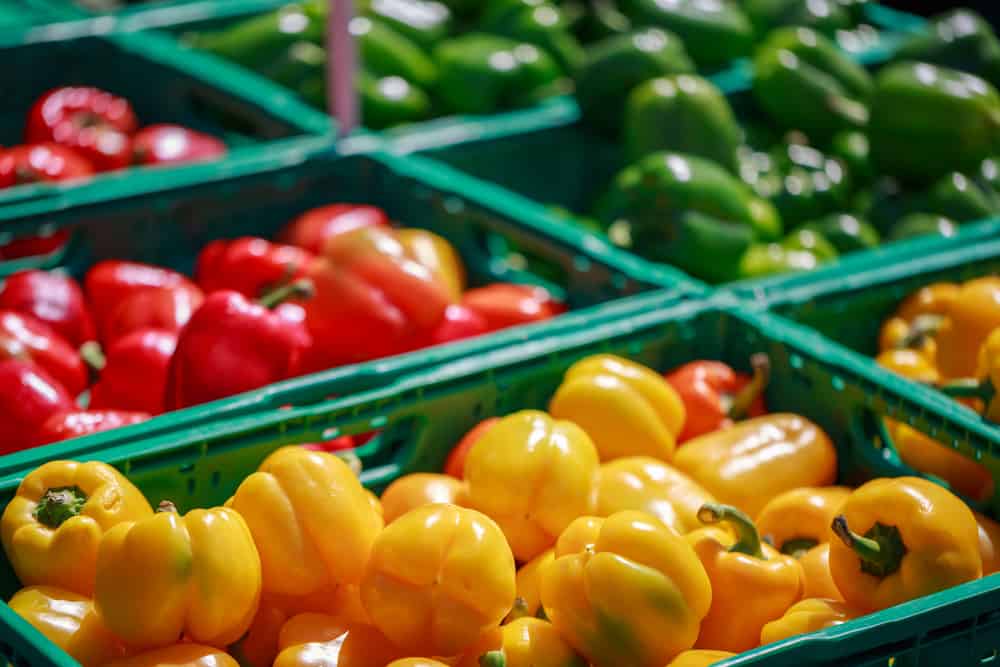
The dawn of globalization paved the way for food supply chains to become truly borderless. As businesses try to keep pace with the growing demands of the local populace, sourcing consumables from around the world requires being persistent with taut logistics run via punishing operational schedules. Many in the industry believe blockchain technology can help in this effort.
Regardless of all this attention to detail, the food industry has to contend with mounting food waste (statistics show that over 30 percent of all the food being supplied in the U.S. eventually finds its way to a landfill). Though this often stems from oversized portions that often are not finished, it also has to do with perishable food and produce that has a limited shelf life, forcing people to either promptly consume the food they buy, or watch it go bad.
To increase shelf life, it is essential to scrutinize available logistics machinery, especially the scope of cold storage infrastructure in place. Of the different issues related to the timely movement of perishable goods, temperature integrity tops the list, according to Robert Oliver, solution architect at Quintiq, a supply chain software solutions provider.
“Monitoring the temperature of the content inside the shipping container and reporting that information in real-time is critical – be it when the container is loaded or when it is hauled across the yard. Once tracking at that level is implemented, we can have better results and improve the situation,” said Oliver.
Businesses in the vertical are now in pursuit of establishing transparency across food supply chains, something that has remained elusive to ascertain in the industry. Many believe blockchain is a viable method to bring greater transparency to the system, as it offers an immutable ledger that can record for the movement of goods from the farm to the fork.
“What blockchain gives you is a way to keep records without the need of a central authority to keep those records, which is interesting as it can open things up,” said Oliver. “Though it doesn’t really provide a better record-keeping alternative to the traditional system, it is more transparent, and you are going to reduce costs in the record-keeping environment because you would not be paying a third party to keep those records and make them available.”
Implementing blockchain would help identify problems at the fundamental level, and in further tracking it down to the source of the issue. Using industrial IoTs would also help, as it can bring in track-and-trace visibility to the process, substantially upping the control businesses have over their product’s logistics cycle.
To illustrate, consider the recent e. Coli outbreaks in the United States from tainted romaine lettuce that resulted in officials advising consumers not to eat any romaine lettuce because they weren’t sure from which farms the outbreak was coming. The problem farms were finally identified, but this process can take months. Significant disruptions to the supply chain occurred, as non-affected farms and businesses were required to recall products or stop shipments.
Obviously, a technology like blockchain cannot be adopted across the breadth of the food supply chain overnight, but could be phased in through functional and free-standing microcosms within the industry – like tracing red wine distilled from grapes grown in Lombardia, Italy. Successful pilot programs could be scaled up across entire verticals over time.
Oliver brought to light the importance of simplifying logistics and how it is critical to observe parameters that affect business margins. “When we look at global food supply chains, companies may be leaving money on the table by not properly applying optimization technologies to it. For instance, with last mile routing, in which companies use legacy systems rather than high-end mathematical optimization techniques that could drive down costs by a few percentage points,” he said.
As businesses increasingly look to maintain a diverse inventory, sourcing and scheduling complexities need to be taken into account. “Retailers have different sources for products from around the world, and have to account for the different costs for sourcing the product and also need to add in different transportation costs and times. They have to look at forecast demands and come up with an overall global plan for doing this weeks and months out,” said Oliver.
The key to inducing transparency in food supply chains lies in reducing the gap between conventional processes and cutting-edge digitization technology. From the consumer’s point of view, it is essential for retailers to better understand those they do business with and to explain in clear terms where they source their produce from, which could decrease the consumer-retailer disconnect and improve the overall perishable goods ecosystem.











